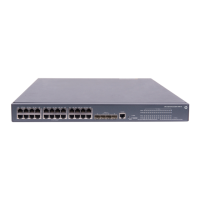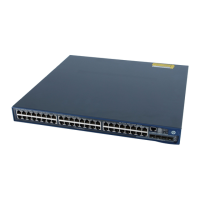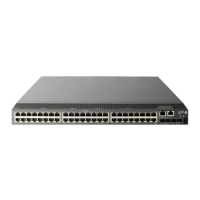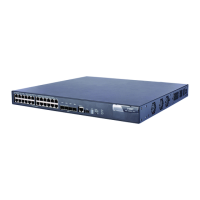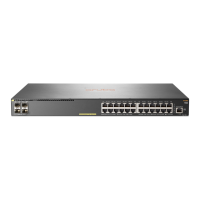262
MLD snooping configuration examples
IPv6 group policy and simulated joining configuration example
Network requirements
• As shown in Figure 66, Router A connects to the IPv6 multicast source through GigabitEthernet
1/0/2 and to Switch A through GigabitEthernet 1/0/1. Router A is the MLD querier on the subnet.
• MLDv1 runs on Router A, MLDv1 snooping runs on Switch A, and Router A acts as the MLD querier
on the subnet.
• Receivers, Host A and Host B, are attached to Switch A, and they can receive IPv6 multicast traffic
addressed to IPv6 multicast group FF1E::101 only.
• IPv6 multicast data for group FF1E::101 can be forwarded through GigabitEthernet 1/0/3 and
GigabitEthernet 1/0/4 of Switch A even if Host A and Host B accidentally temporarily stop
receiving IPv6 multicast data.
Figure 66 Network diagram for IPv6 group policy simulated joining configuration
Source
Router A Switch A
Receiver
Receiver
Host B
Host A
Host C
GE1/0/1
GE1/0/4
GE1/0/2
GE1/0/3
MLD querier
1::1/64
GE1/0/1
2001::1/64
GE1/0/2
1::2/64
Configuration procedure
1. Enable IPv6 forwarding and configure IPv6 addresses
Enable IPv6 forwarding and configure an IPv6 address and prefix length for each interface according to
Figure 66 (details not shown).
2. Configure Router A
# Enable IPv6 multicast routing, enable IPv6 PIM-DM on each interface, and enable MLDv1 on
GigabitEthernet 1/0/1.
<RouterA> system-view
[RouterA] multicast ipv6 routing-enable
[RouterA] interface gigabitethernet 1/0/1
[RouterA-GigabitEthernet1/0/1] mld enable
[RouterA-GigabitEthernet1/0/1] pim ipv6 dm
[RouterA-GigabitEthernet1/0/1] quit
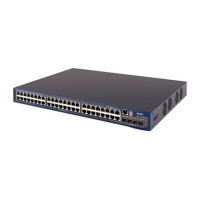
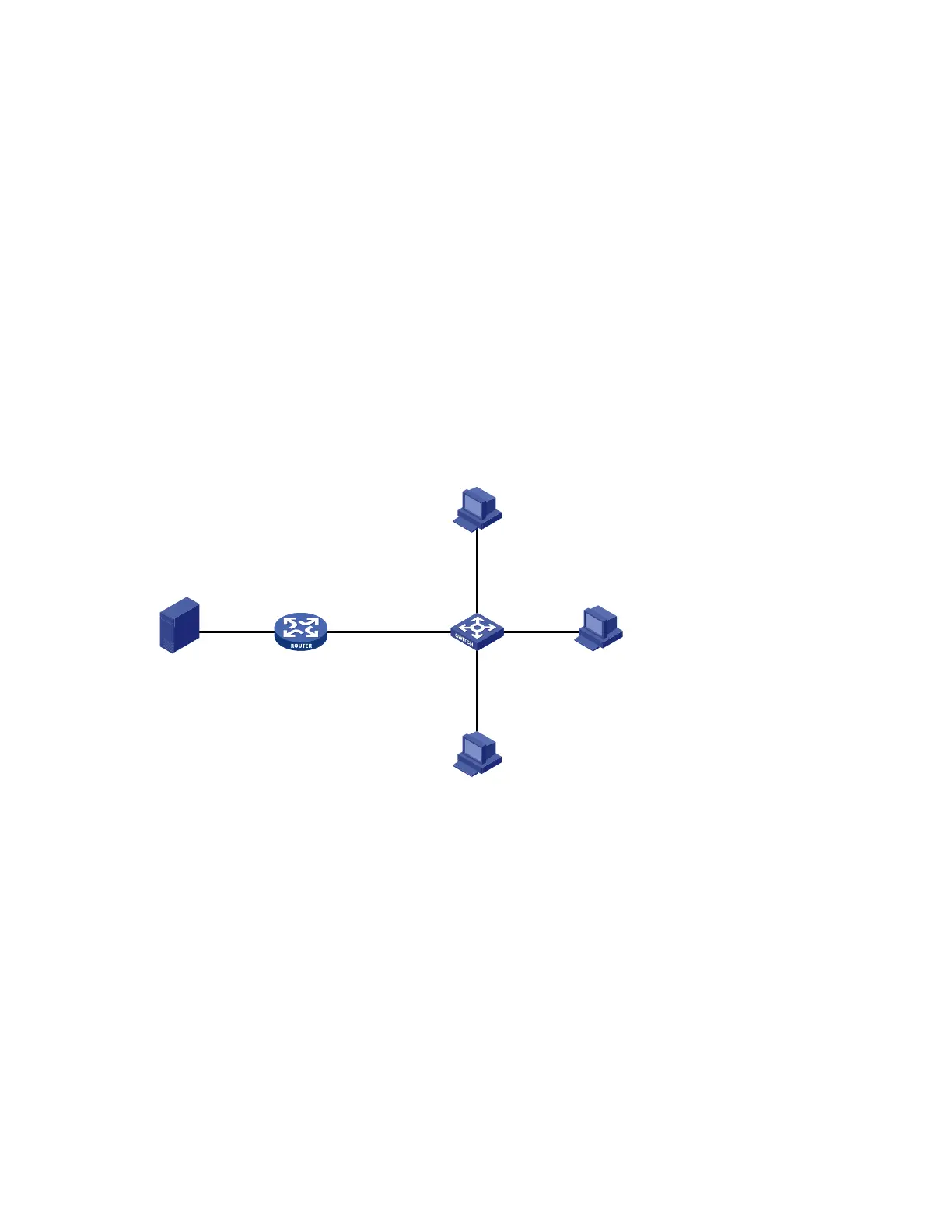